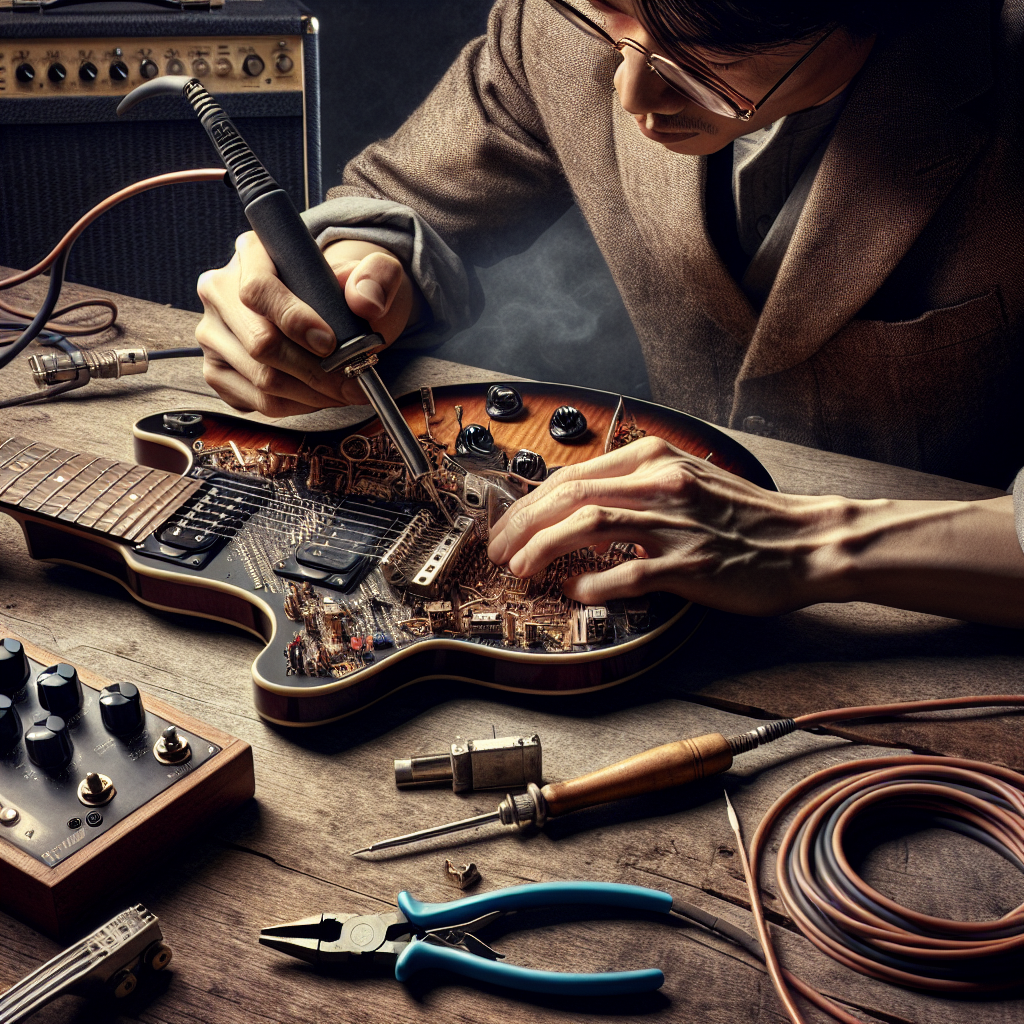
Top 7 Best Soldering Techniques for Guitar Electronics
Soldering is an essential skill for guitar enthusiasts looking to tinker with their instrument’s electronics. Whether you’re replacing pickups, fixing a broken cable, or upgrading your guitar’s wiring, knowing how to solder properly is crucial. In this guide, we’ll explore the best soldering techniques for guitar electronics, ensuring your guitar projects are successful and long-lasting.
1. Choose the Right Soldering Iron
The foundation of effective soldering begins with selecting the right soldering iron. You’ll need a tool that heats up swiftly and maintains a consistent temperature. For guitar electronics, a soldering iron with a power rating between 20W and 40W is generally sufficient. Opt for a model with adjustable temperature settings for greater control, and consider a soldering iron with a fine tip for precision tasks.
2. Use Suitable Solder and Flux
For guitar electronics, rosin-core solder is the most appropriate choice, as it contains flux that helps the solder flow more easily and cleanly. A 60/40 tin-lead solder with a diameter of about 0.032 inches is ideal. It creates strong, reliable joints and is easy to work with. If you’re working in a lead-restricted environment, look for lead-free solder with a similar rosin core composition.
3. Clean and Prepare Surfaces
A clean connection is a reliable connection. Before soldering, ensure all surfaces are free of oxidation and dirt. You can use a small piece of sandpaper or a wire brush to gently clean components before soldering. This ensures the solder properly adheres to the metal surfaces, creating a strong conductive pathway.
4. Master the Art of Tinning
Tinning involves applying a small amount of solder to a component before making the actual connection. Begin by heating the soldering iron and applying a bit of solder to the iron’s tip. This helps with heat conduction. Then, briefly touch the soldering iron to the wire or component, adding a tiny bit of solder. Tinning prevents the strands of wire from fraying and makes the final solder joint cleaner and more robust.
5. Soldering a Clean Joint
When making the final connection, first ensure your soldering iron is heated to the correct temperature. Firmly press the tinned wire and the component together, and then apply the soldering iron to the joint. Feed solder onto the joint, not the iron tip, to cover the connection thoroughly with solder. Aim for a shiny, smooth surface; this indicates a strong joint devoid of voids and cold spots.
6. Proper Soldering Technique
Practice makes perfect. Hold the soldering iron like a pen, ensuring you have a stable, comfortable grip. This will give you better control over your movements. Soldering requires steady hands and some patience; don’t rush. Allow the solder to melt and flow evenly, and avoid excessive movement while the solder cools. Remove the soldering iron as soon as the solder begins to solidify.
7. Inspect and Test
After soldering, inspect each joint visually. A good solder joint should be shiny and conical in shape. Use a multimeter to check the connectivity and ensure that there are no shorts. This step is critical for ensuring that your guitar’s electronics are functioning correctly before you reassemble everything.
FAQs
1. What temperature should I set my soldering iron to when working on guitar electronics?
A temperature between 350°C to 400°C (662°F to 752°F) is usually ideal for guitar electronics. This temperature allows for efficient solder melting and application without damaging sensitive components.
2. Is lead-free solder better for guitar electronics?
Lead-free solder is eco-friendly and safer for health, but it often requires higher temperatures to melt. For beginners or traditionalists, 60/40 lead solder might be easier to work with and provide better results.
3. Can I reuse solder that has dripped onto my workbench?
It’s not recommended to reuse solder that has already melted and cooled, as it may contain impurities or loss in flux that can affect the integrity of your connections.
4. Why does my solder joint look dull?
A dull solder joint typically indicates a cold joint, which lacks proper adhesion and conductivity. Ensure you apply the solder correctly by heating the components adequately before applying solder.
5. Do I always need to use flux when soldering guitar electronics?
While rosin-core solder contains flux, additional flux can be beneficial, particularly when working with oxidized surfaces. It can help ensure better solder flow and adhesion.
6. What happens if the solder joint is too big?
A solder joint that is too large can bridge contacts it shouldn’t, potentially causing shorts. Trim excess wires and use the proper amount of solder to prevent overly large joints.
Mastering these soldering techniques will empower guitar enthusiasts to make precise and safe modifications. With practice, these skills ensure your guitar electronics operate optimally, enhancing your overall musical experience. If you’re interested in further soldering techniques and tools, check out the detailed guides available on resources like iFixit.
Remember, safety first! Always work in a well-ventilated area and wear protective gear as necessary. Happy soldering!